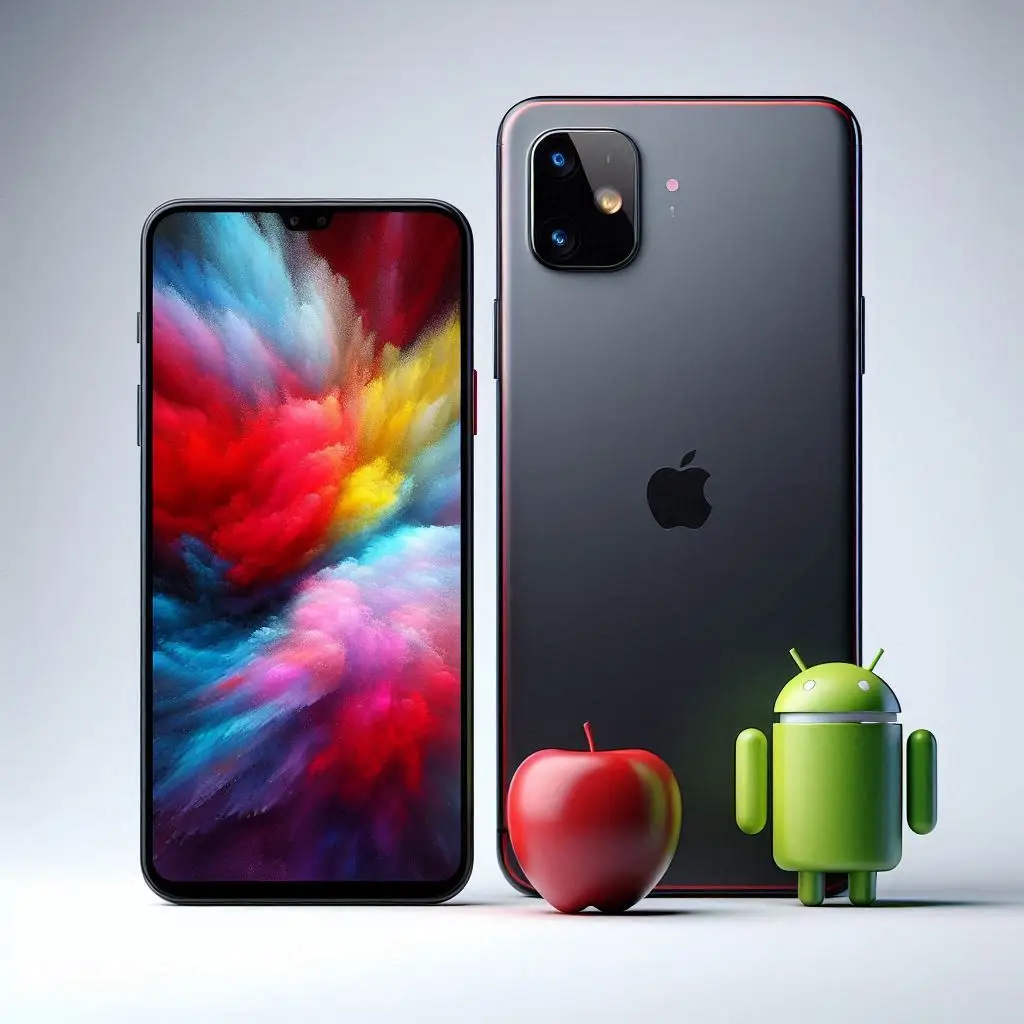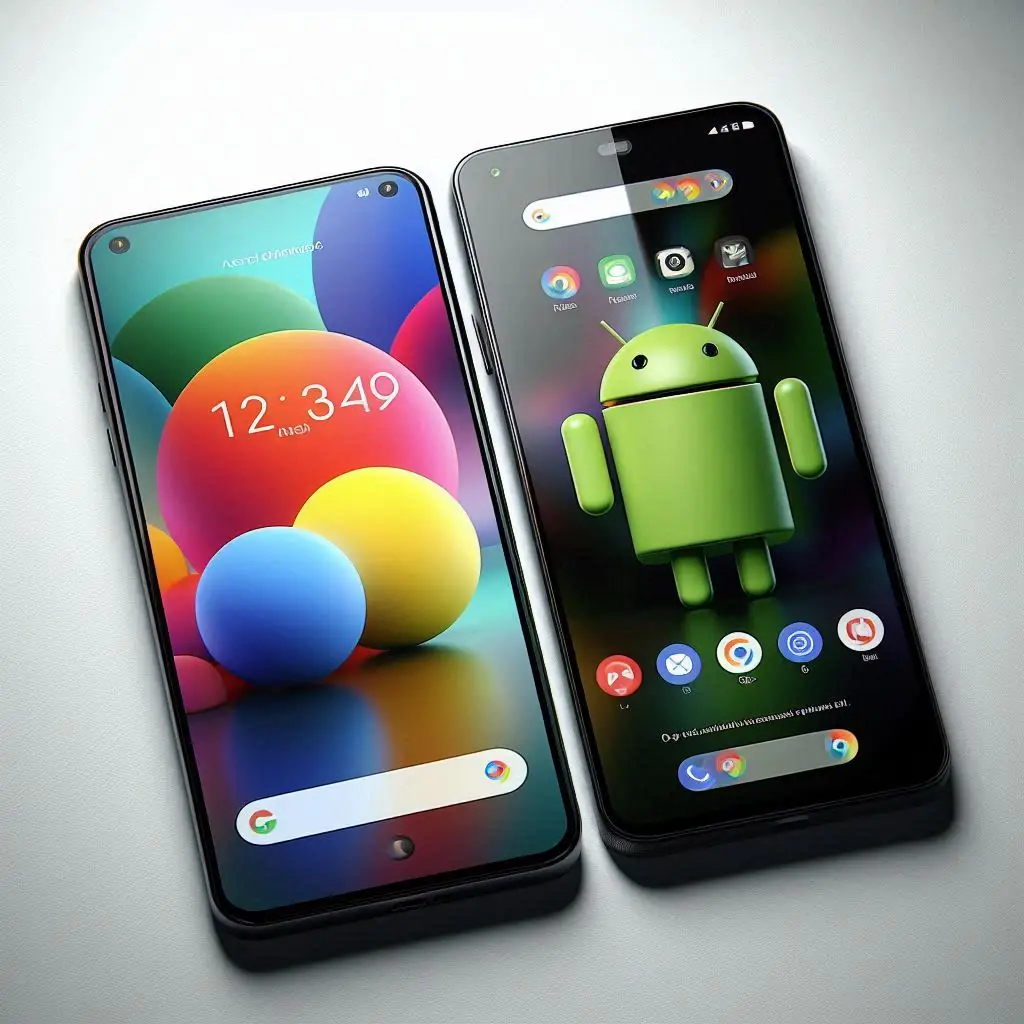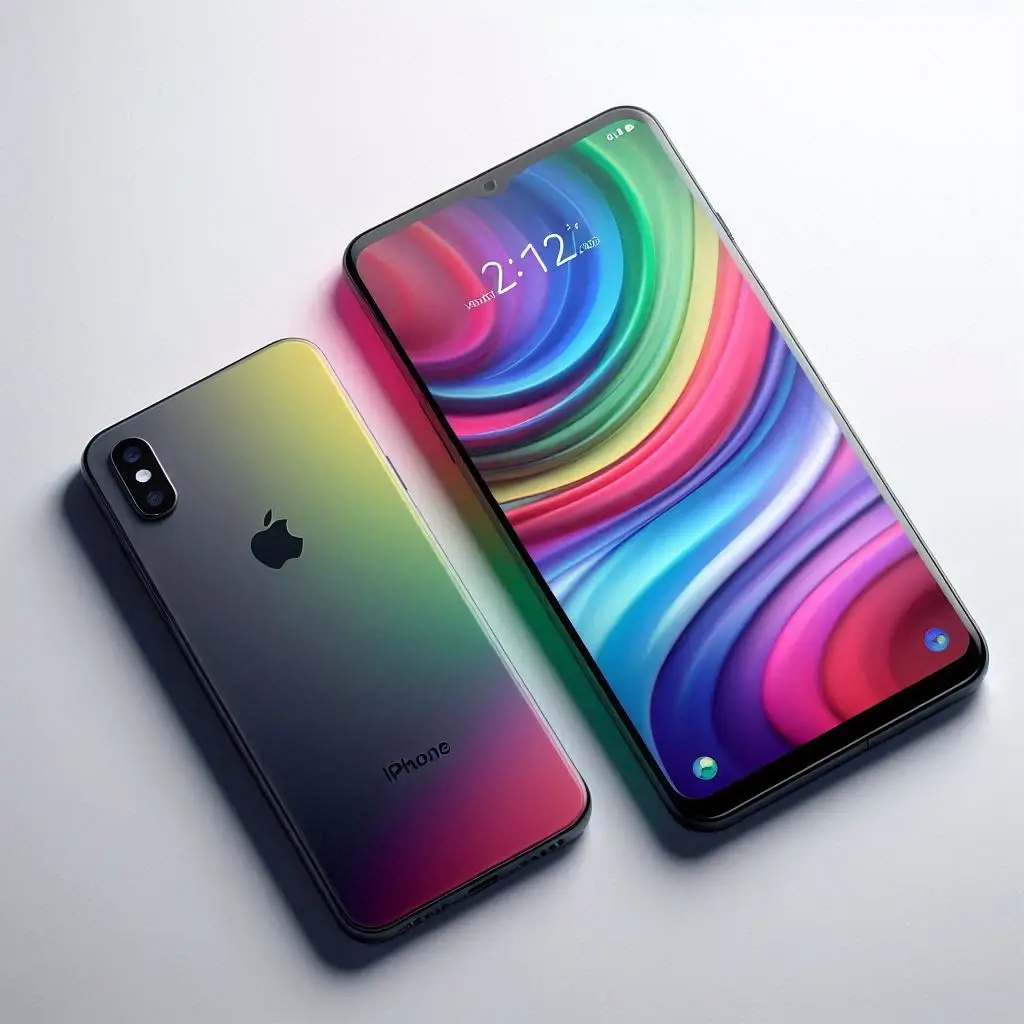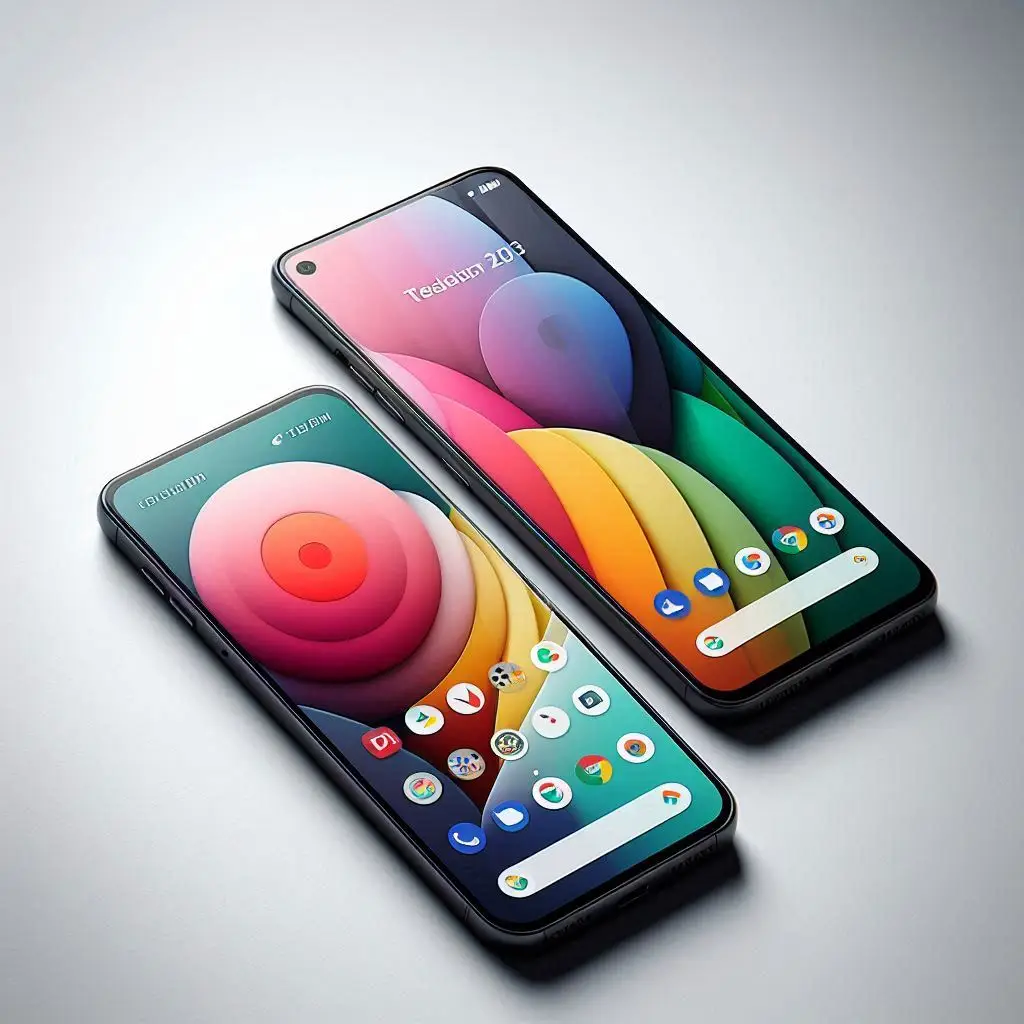iPhone vs Android 2024: Which OS Reigns Supreme in the Smartphone World?
As we step into 2024, the debate between iPhone and Android continues to captivate smartphone users around the globe. With advancements in technology, features, and user preferences evolving, understanding which operating system (OS) reigns supreme is crucial. This article delves into the key differences, performance comparisons, customization options, and more to help consumers make informed decisions when choosing between these two giants of the smartphone world.

What are the Key Differences Between iPhone and Android Ecosystems?
Understanding the iOS Ecosystem
The iOS ecosystem, dominated by Apple products, offers a tightly integrated experience that appeals to many users. With the iPhone 15 Pro and iPhone 15 Pro Max leading the charge in 2024, Apple’s operating system provides seamless continuity features, allowing users to transition effortlessly between their devices, including the Apple Watch and MacBook. This ecosystem is built around the App Store, which boasts a curated selection of apps that are optimized for performance and security. iOS is known for its user-friendly interface, making it easier for both tech-savvy individuals and novices to navigate. The uniformity of iPhones ensures that users enjoy consistent updates and features, making it a reliable choice for those who prioritize stability and ease of use.
The Android Ecosystem Explained
On the other hand, the Android ecosystem is much more diverse, thanks to its open-source nature. Android devices, whether it’s a Samsung Galaxy, Google Pixel, or other Android smartphones, offer a wide variety of choices in terms of hardware, designs, and price points. The flexibility of Android allows manufacturers to customize their devices with different versions of Android, such as Android 14, and user interfaces like One UI. This diversity means that users can choose an Android phone that fits their specific needs, whether that’s high-end specifications or budget-friendly options. Furthermore, the Google Play Store provides a vast array of apps, often including options that may not be available on iOS, catering to a broader audience with varied interests, unlike the more curated Apple ecosystem.
App Availability on iPhone vs. Android
When comparing app availability, both ecosystems have their strengths. iOS tends to get new apps and updates faster than Android, as many developers prioritize the Apple App Store due to its lucrative user base, but the Apple and Android platforms each have their unique strengths. However, Android also shines in offering alternative app sources and more flexibility in app installations, which can appeal to power users and developers. For instance, if you want to customize your experience with apps not found in the Google Play Store, Android lets you sideload applications easily, giving you more freedom than an iPhone. Ultimately, the choice between iPhone and Android may come down to personal preferences regarding app ecosystems and availability.

Is the iPhone Better Than Android in 2024?
Performance Comparison: iPhone 15 Pro vs. Samsung Galaxy
In terms of performance, the iPhone 15 Pro has set a high bar with its powerful A17 chip, which excels in speed and efficiency. Apple’s commitment to performance is evident, as the iPhone consistently outperforms many Android devices in benchmarks. On the other hand, flagship Android phones like the Samsung Galaxy series also offer impressive performance, particularly with their latest processors. The Galaxy Z Fold, for example, showcases how Android can push boundaries with innovative folding technology, setting it apart from the latest iPhone models. However, for raw performance and smooth operation, especially in gaming and heavy multitasking, many argue that the iPhone is better than Android.
Camera Capabilities: iPhone vs. Android
Camera technology is another critical aspect where both platforms compete fiercely. The iPhone 15 Pro features advanced computational photography capabilities that allow for stunning images with excellent color accuracy. However, Android cameras, particularly those in high-end devices like the Google Pixel and Samsung Galaxy, also offer remarkable photography features, including versatile camera setups and extensive manual controls. In 2024, users may find that the camera choice largely depends on their specific photography needs, as both platforms deliver exceptional results.
Battery Life and Efficiency: Which is Superior?
Battery life and efficiency remain crucial factors for smartphone users. The iPhone is known for its optimization, allowing users to get through a full day on a single charge, even with demanding tasks. However, Android devices like the Samsung Galaxy have made significant strides in battery technology, and many users choose Android for the larger batteries that support longer usage times. The introduction of features like adaptive battery management in Android 14 enhances this capability. In this regard, choosing between an iPhone and an Android device may boil down to individual usage patterns and preferences.

How to Choose Between iPhone and Android Devices?
Identifying Your Needs: Apps, Customization, and More
Choosing between an iPhone and an Android device necessitates identifying your specific needs. If you value a curated app experience and integration with other Apple devices, then buying an iPhone may be the better option, especially within the Apple ecosystem. Conversely, if customization options and a broader selection of devices appeal to you, buying an Android smartphone might be more suitable than choosing an iPhone. Understanding your daily usage patterns, whether for professional tasks or personal enjoyment, can guide your decision significantly between Android and iOS.
Budget Considerations: iPhone vs. Android Pricing
Budget is an essential factor in deciding whether to buy an iPhone or an Android device. Generally, iPhones are priced at a premium, reflecting their build quality and brand prestige. In contrast, Android devices cater to a broader range of budgets, with options available from entry-level to high-end flagship models. This variety in pricing gives consumers the flexibility to choose an Android handset that fits their financial situation without compromising on essential features.
Future-Proofing: Software Updates and Longevity
When considering longevity, both operating systems offer different perspectives on future-proofing. iPhones typically receive software updates for several years, ensuring that even older models remain relevant and secure. In contrast, while many flagship Android devices also receive regular updates, the longevity can vary significantly between manufacturers. This consideration is crucial for consumers looking to invest in a new phone that will last over time, as the iPhone’s reputation for longevity may give it an edge over many Android devices.
What are the Customization Options in Android Compared to iPhone?
Understanding Android’s Home Screen Customization
One of the most significant advantages of Android is its extensive customization options. Users can modify their home screens, change app icons, and even create unique layouts that reflect their personal style. This level of customization allows Android users to tailor their devices precisely to their preferences, making the experience feel uniquely theirs compared to the more uniform iPhone makes. On the flip side, iPhone customization options remain limited, focusing instead on a uniform and streamlined user experience.
Widgets on Android vs. iOS
Widgets are another area where Android excels, providing a level of customization that iPhone still does not fully match. The ability to add various widgets to the home screen allows users to access information quickly without opening apps. This feature significantly enhances usability and gives users more control over their home screen layout. While iOS has introduced widgets, they are not as flexible or customizable as those on Android, limiting user interaction and personalization.

Limitations of iPhone Customization
Despite its strengths, iPhone customization options are relatively restrictive. Users are limited to changing wallpapers and rearranging app icons, which can feel monotonous over time. The lack of extensive customization can be a dealbreaker for those who enjoy personalizing their devices. Therefore, if customization is a priority for you, Android undoubtedly offers a more rewarding experience.
How Do Notifications Work Differently on iPhone and Android?
Notification Management on iOS
Notification management on iOS is designed for simplicity and ease of use. Notifications appear at the top of the screen and can be easily managed through the Notification Center. However, the iPhone’s notification system can feel somewhat restrictive, as it doesn’t allow for extensive customization. Users can choose to silence notifications but often find that managing them may not be as flexible as on Android.

Android Notification Features and Flexibility
In contrast, Android offers a more robust notification system, allowing users to prioritize notifications, customize how they appear, and even choose specific actions for different notifications, which is a feature that sets it apart from the Apple ecosystem. This flexibility enables users to tailor their notification experience according to their preferences, making it easier to manage alerts and stay organized throughout the day. The ability to directly respond to messages from the notification shade is another feature that highlights Android’s advantage in this area.
Comparing User Experience in Handling Notifications
Ultimately, the user experience in handling notifications can significantly impact daily smartphone use. While iOS provides a straightforward approach, Android’s customizable features appeal to users who want greater control over their interactions. This difference in notification management further illustrates the distinct philosophies behind iOS and Android, influencing how users engage with their devices on a day-to-day basis.


